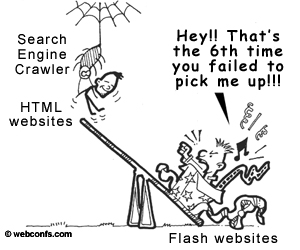Directory submission refers to the process of adding your website to a web directory. The directory submission process involves submitting your website URL along with other details of your website to the most appropriate category.
In the SEO world, directory submission is the basic step taken by marketers toimprove link popularity of a website. This can be done by the webmaster himself or he can outsource it to somebody who is good at this.
The charges for doing directory submission for a website URL mainly depends on the number of directories. Some of the directories can be paid and some others can be free. Based on these calculations the internet marketing guys will charge you.
But why do people spend so much money to get listed in such directories? There are plenty of reasons to explain that.
Impact of Directory Submission on Search Engine Rankings
Having many links to your website on the web is like sign boards on the road. The more the links means more are the chances that the search bot or humans will stumble upon your site.
Links to your website on the web serves as the traveling path to your website.Directory submission is a way to create such links to make your presence felt through out the web.
Submitting links to directories serve as the directions for the search engine spiders. The more frequently they see a link the more the chances of getting to your site. The more the number of times a search engine visits your site from external references the more the ranking they will give, considering your website is very important.
You can also target specific keywords or key phrases using directory submissions. Use the important keywords/key phrases as titles for your directory submissions.
That will fetch you a better ranking and therefore a better traffic figures. What could be more beneficial than that if you own a business website?
Directory Submissions and SEO
The SEO folks or the people who do Search Engine Optimization treat directory submission as a starting step to off page optimization of a website. In simple words, they increase the visibility of a website.
Links are considered as references to the website. Higher the number of references, the better will be the priority given to the website by the search engines. Naturally, generating such huge number of back links is not an easy task.
But you can easily achieve the same with link building. Directory submissions are the most affordable form of link building. That is the reason why SEOs prefer it as an easy way to create back links. SEOs prefer directory submission as quick and cost effective way to get the new sites noticed by search engines. And thus get indexed in the search database faster.
What to look for in a Directory Submission Service?
The SEO folks usually outsource the directory submission part. Be a SEO specialist or a webmaster you need to be sure of the quality of directory submission service.
Submission Timings – The directory submission shouldn’t happen in a single day; unless it is for an established website. For newer sites that are less than one year old, it is recommended to submit slowly. A good directory submission service should provide you an option to submit slowly for best results.
SEO Friendliness – Do make sure that the directories to which your sites are submitted are SEO friendly ones. The listed directories have to be working and should not have any broken links. The better it will be if they are old and have good rankings.
Quality vs. Quantity- Right now the web is flooded with directories that have never approved a single listing in years. Make sure you submission service is providing a tracking service so that you can see how many of the submitted listings are actually getting approved. A good submission service does not submit to thousands of directories, as they know only few of directories on the web are actually approving. If a company is claiming large number of approvals, they you can be sure that the directories used are their own network of directories; created just for the submission service.
Manual vs. Automated – Directory submission should be a manual process. You should not go for automated submissions, as they will simply submit your websites to their own network of poor directories. More than that, it may even harm you as adding to bad neighbourhoods could do the worst to you website.
Directory Submission isn’t an easy piece of cake. Many hours of labour and proper planning has to be there for the desired results. So always go for the well-reputed folks than beginners or you will loose even what you have now.

